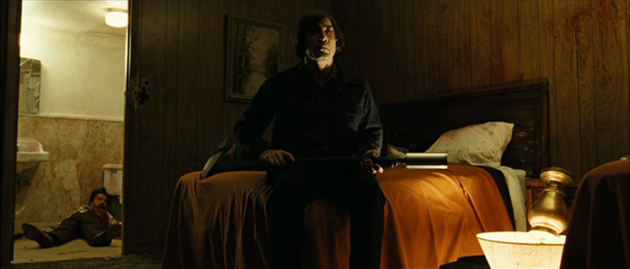Jess Gonchor

AS: I was just talking to John Myhre and he described how on Wanted the director Timur Bekmambetov was a big Russian visual effects guy and at first he laughed at John’s foam-core models but then he was won over and ended up asking him to do one for every set.
JG: I can see that. I mean in this day and age everything is just pre-visualization and that’s fine, I love it, it’s cool. I’m into it. But on No Country and True Grit we didn’t have all the money in the world and we didn’t have all the support in the world with lots of sophisticated gear, so we did it the old-fashioned way and quite frankly I prefer that.
AS: Do you have a certain set crew that you always work with?
JG: I’d like to, but people are not always available. I certainly have my favorite people. I’ve worked with the same people two, and three, and four movies. But you can’t always hire right when people are available. If I could I would. I have two different teams of people that I work with and they’re both extraordinary.
AS: When you go on a location like New Mexico do you end up having to crew up with local people or do you bring a lot of people out?
JG: With these movies you’re encouraged to hire local people because they’re much cheaper. For True Grit out of maybe ten people in the art department, including art director, assistant art director, draftspeople and model-makers and things like that, three of them were from LA and seven of them were from New Mexico or Texas.
AS: I noticed that you did some work as a construction foreman before going on to become an art director and then production designer. How did that transition happen?
JG: I got a job building sets one day and I enjoyed it and they were giving me more and more responsibility and it just sort of came naturally. I was having a really amazing time doing it but always in the back of my mind I knew I wanted to be they guy that was in charge of this whole thing. So it was a little bit of hard work and lots of luck. I slipped into a couple of jobs where people gave me a shot at being an assistant art director or set designer. I took advantage of that and there was a lot of luck involved. You know somebody drops out of something and you take their slot. Then when the time was right I got my own movie and fortunately for me it worked out really well and I didn’t have to spend a lot of years doing things that I didn’t like. I was fortunate that the first thing out of the gate was really very successful. I’ve only designed nine movies now and I’m proud of them all. I may have had to design nineteen movies to get to this point if that first one wasn’t good, so I’m just real fortunate with that.
Pingback: Sarah Greenwood